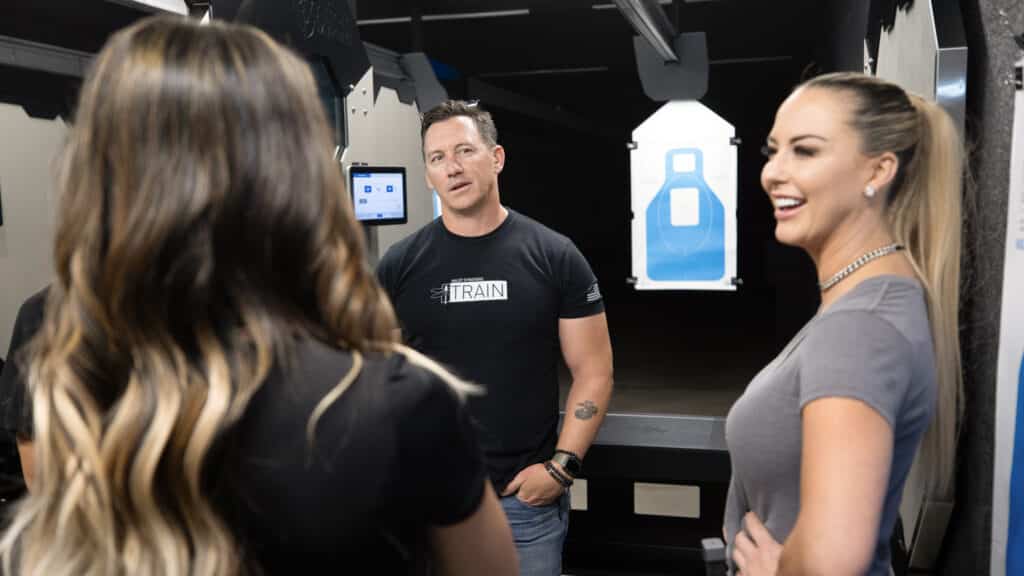Introduction
Firearms, akin to precision instruments, demand meticulous care and attention. Whether you’re an avid marksman or just starting your journey, mastering the art of firearm maintenance is paramount. This expanded guide delves deeper into the nuances of gun cleaning, safety, and the best practices to ensure your firearm remains in peak condition after every range outing.
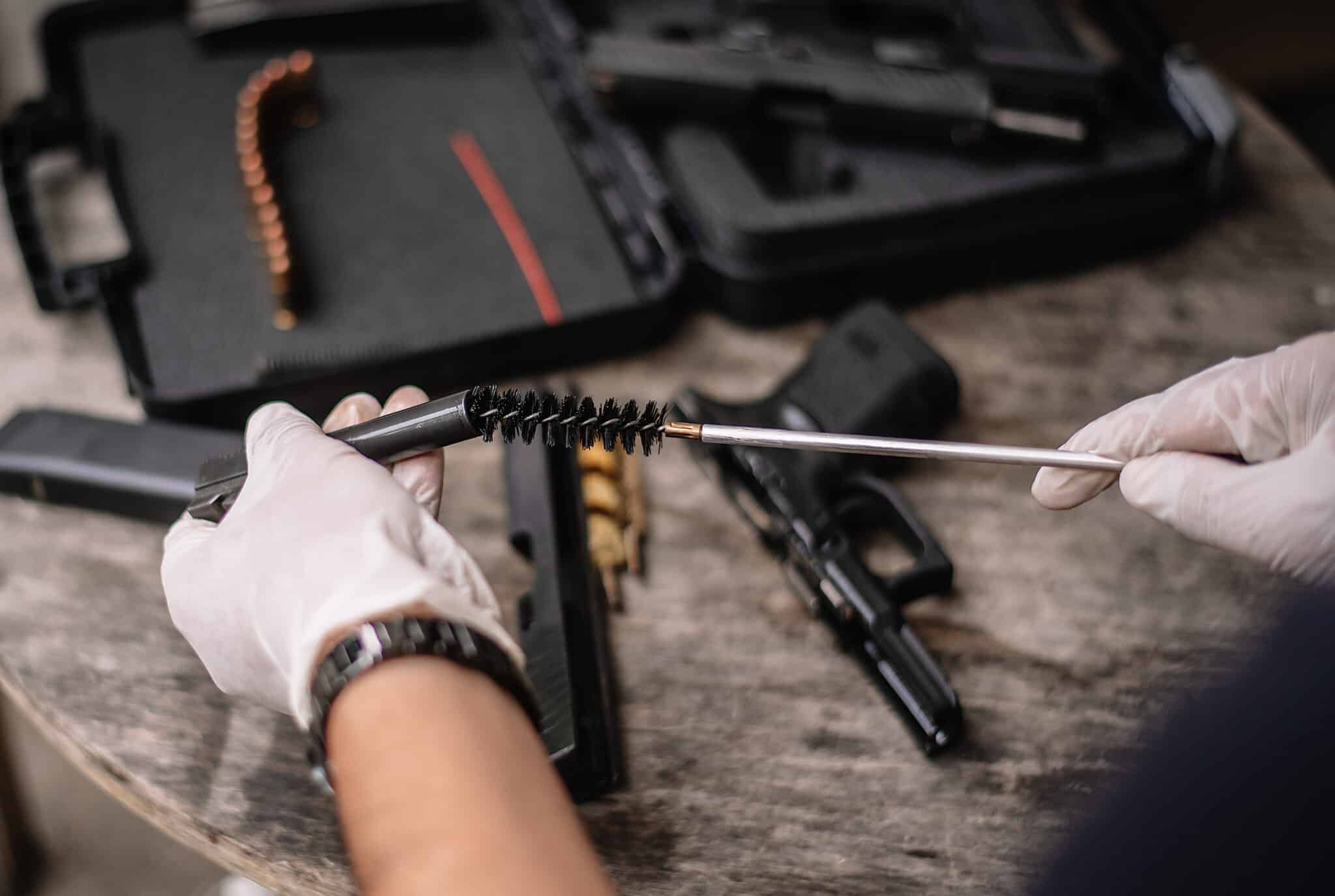
Why is Firearm Maintenance Essential?
Beyond the apparent need for a functional firearm, regular maintenance is a testament to a gun owner’s commitment to safety and responsibility. Here’s why it’s non-negotiable:
Safety:
A well-maintained firearm minimizes the risk of jams, misfires, and other malfunctions that could lead to unintended consequences.
Performance:
A clean firearm ensures consistent bullet trajectory, reducing variables that might affect your shooting accuracy.
Longevity:
Just like a well-serviced car lasts longer, regular maintenance ensures your firearm stands the test of time, offering you reliability for years to come.
Value Preservation:
For those who view firearms as an investment, maintaining them can preserve or even increase their value over time.
Steps to Proper Firearm Maintenance
Step 1 – Safety First:
The cardinal rule before embarking on any firearm maintenance is to ensure it’s unloaded. Always remove the magazine, open the action, and visually inspect the chamber. This isn’t just a cursory glance; take a moment to be certain. Remember, most firearm accidents during cleaning occur because the gun was thought to be unloaded when it wasn’t. It’s a simple step, but it’s the bedrock of gun safety. For a more in-depth explanation of firearms safety and safe handling best practices, visit our friends at NSSF.
Step – 2 Disassemble with Care:
Every firearm is a masterpiece of engineering, with each part playing a crucial role. Before disassembling, always refer to the manufacturer’s manual specific to your firearm model. While a field strip or partial disassembly is usually sufficient for cleaning, it’s essential to know how to do it right. Missteps here can lead to reassembly challenges or even damage.
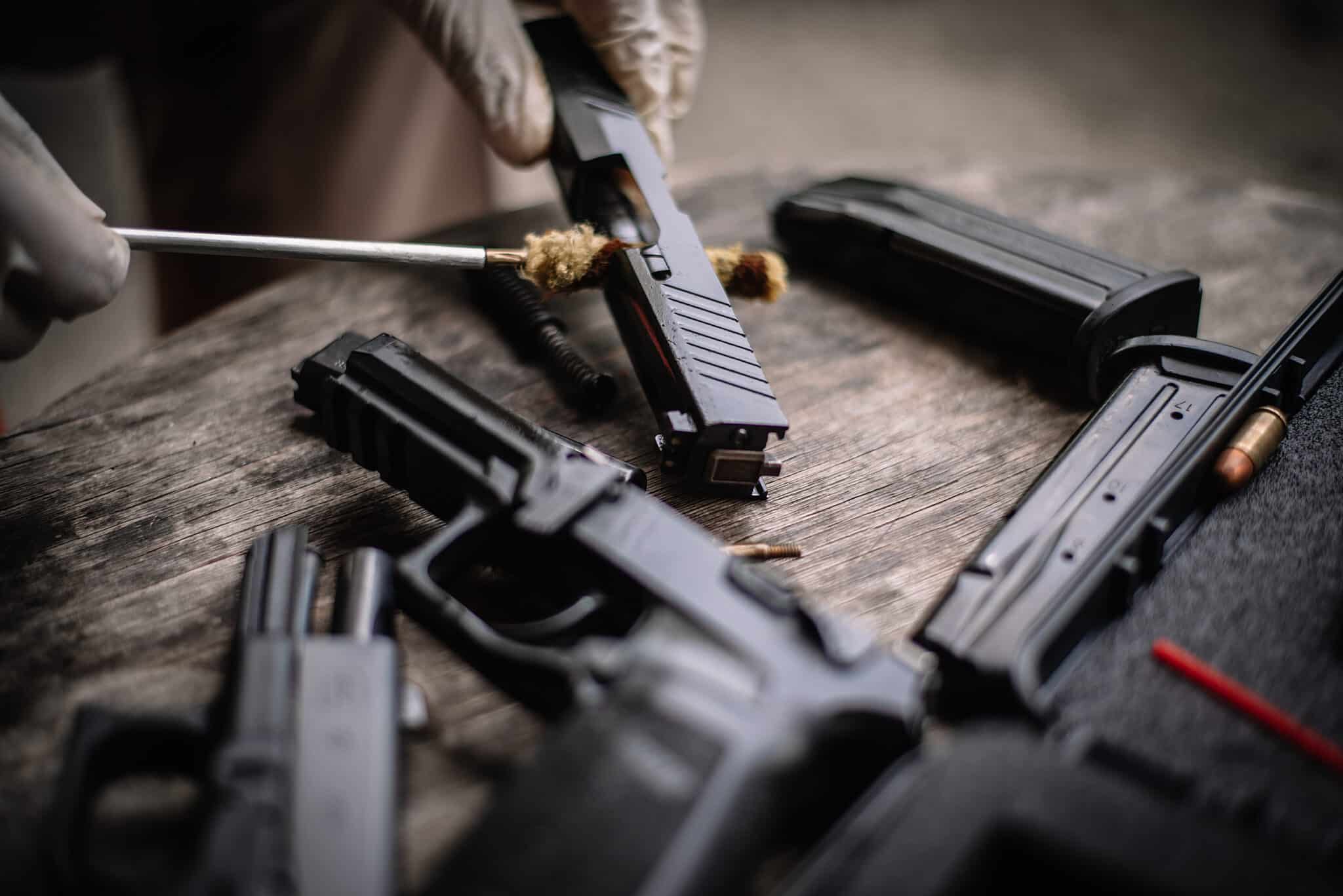
Step 3 – Deep Cleaning:
A firearm accumulates residues not just in the bore, but in many of its intricate parts. Using a quality bore cleaner, start with the barrel, ensuring all residues are removed. Specialized brushes and tools can help clean the action, slide, and other components. Remember, the residues left behind, especially from gunpowder, can be corrosive. Over time, if neglected, they can degrade the firearm’s metal parts, leading to functional and safety issues.
Step 4 – Lubrication:
After cleaning, it’s time to lubricate. Think of lubrication as the lifeblood of your firearm. Moving parts, when fired, experience intense friction. Proper lubrication reduces this friction, preventing wear and tear. However, it’s essential to strike a balance. Over-lubrication can make your firearm a magnet for dirt and debris, while under-lubrication can lead to increased friction. Always use firearm-specific lubricants, and apply them judiciously.
Step 5 – Reassemble and Function Check:
Once your firearm is cleaned and lubricated, reassemble it by following the manufacturer’s guidelines. But the process doesn’t end there. Conduct a comprehensive function check. This involves checking the safety, trigger function, slide or bolt operation, and other moving parts. It’s a final assurance that everything is in its rightful place and functioning as it should.
Step 6 – Storage Solutions:
Proper storage is as crucial as cleaning. Environmental factors, especially humidity, can be detrimental to firearms. When storing, ensure your firearm is in a cool, dry place. If you’re looking for advanced solutions, consider investing in gun safes or storage cases with built-in dehumidifiers. These not only protect against moisture but also offer added security.
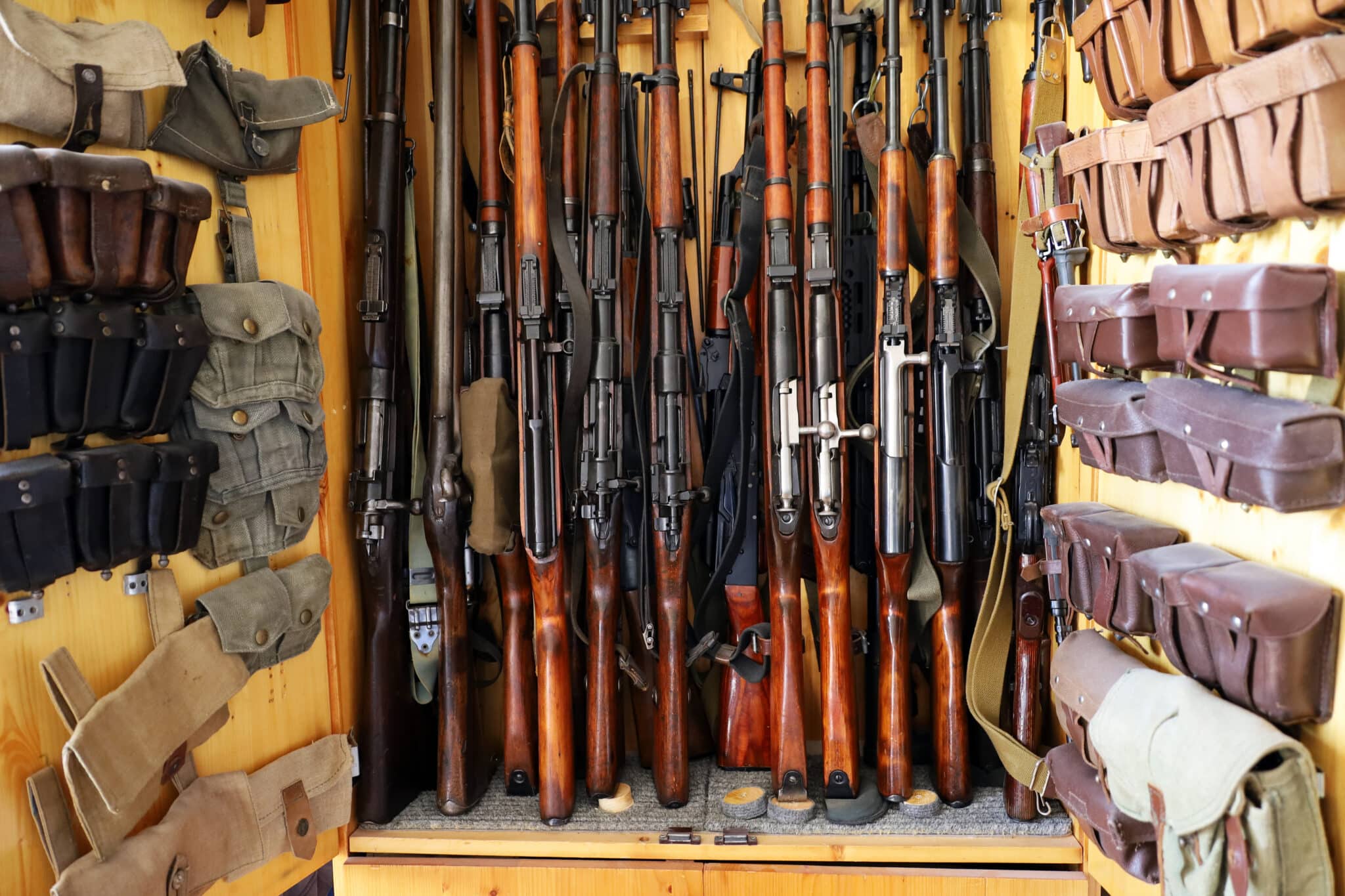
Check out Action Target’s full selection of Gun Cleaning and Firearm Maintenance products HERE.
FAQs on Firearm Maintenance
Should I clean my gun even if I haven’t fired it?
Absolutely. Over time, dust and environmental contaminants can accumulate. Even without firing, oils can degrade, and metals can oxidize. Regular check-ups ensure your firearm remains in optimal condition.
Can I use household oils for lubrication?
It’s advisable to use firearm-specific lubricants. Household oils might not offer the same protection, and their viscosity might not be suitable. Some can even gum up, attracting more dirt and debris.
Is there a ‘best’ cleaning product?
While there’s no one-size-fits-all answer, always opt for reputable brands. Research and reviews can guide your choice. Shop.actiontarget.com curates a selection of top-tier maintenance products.
How often should I replace my cleaning tools?
Cleaning tools, like brushes and patches, wear out over time. It’s essential to replace them when they show signs of wear or no longer effectively clean. Using worn-out tools can be counterproductive and might not provide the thorough cleaning your firearm needs.
Do different firearms require different maintenance routines?
While the basics of firearm maintenance remain consistent, different firearms, especially between rifles, handguns, and shotguns, might have specific needs. Always consult the manufacturer’s manual and consider the firearm’s design and purpose when establishing a maintenance routine.
Is there a risk in over-cleaning my firearm?
While regular cleaning is essential, over-cleaning, especially with abrasive tools or solvents, can wear down the firearm’s parts. It’s crucial to strike a balance. Clean to remove residues and contaminants, but avoid excessive scrubbing or using overly harsh chemicals.
What’s the difference between cleaning and maintenance?
Cleaning primarily focuses on removing dirt, residues, and contaminants. Maintenance encompasses cleaning but also includes lubrication, inspection, and potential part replacements. Think of cleaning as a subset of the broader maintenance process.
Can old ammunition affect my firearm’s cleanliness?
Yes, older ammunition, especially if stored in less-than-ideal conditions, can leave behind more residues or even corrode the firearm’s chamber and barrel. Always inspect old ammunition before use and be prepared for a more thorough cleaning session afterward.
Conclusion
Being a firearm owner is a responsibility. It’s not just about hitting the target but ensuring the journey to that perfect shot is safe and reliable. Regular maintenance is a ritual, a commitment to the craft, and a nod to the legacy of marksmanship. Dive deeper, learn continuously, and always prioritize safety.
For a treasure trove of information and top-notch shooting range products, Action Target’s blog and
Posted in Range Supplies & Accessories, UncategorizedTagged firearms, how-to, training
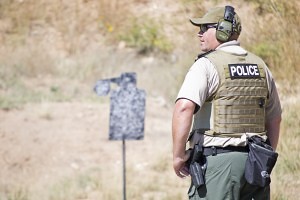
Proper training begins with proper facilities and equipment. For law enforcement agencies, the fiscal year is coming to a close – making now a great time to use that extra budget for needed range equipment, upgrades, and services.
For agencies looking to upgrade while still saving money, Action Target | Law Enforcement Targets offers a number of programs to help law enforcement departments supplement their budgets without skimping on their ranges.
Recycling brass is a great way to reduce costs without cutting into budgets – and if done right, can mean more money for the range. The Law Enforcement Target Brass Program allows departments to recover money on their spent brass by applying credit to their account. The department then receives credit that can be used toward any Action Target or Law Enforcement Targets product or service including portable targets, range services, spare parts, or even range upgrades. Credit earned through the program never expires and can be accumulated over time for larger purchases. One agency accrued over $60,000 through brass trade-in alone.
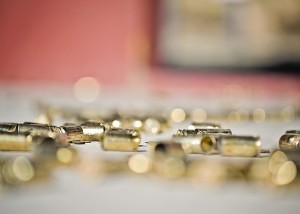
The process is simple: a range master collects the spent brass and securely fastens the containers to a pallet. The range master then contacts Law Enforcement Targets at 800-779-0182 and schedules a time for the brass to be picked up. The brass is picked up and sent to a local recycler, sorted, inspected and weighed. The freight cost will be taken out of the credit received. The range master is then contacted by Law Enforcement Targets with the credit amount based on the net weight of the brass which is competitively priced based on current commodity pricing.
Action Target | Law Enforcement Targets is a turnkey provider for Gun ranges and training facilities. With the Brass Program, departments can use the credit for range parts/services/range consumables including de-Lead products, eye and hearing protection, general use products or products for resale.
Guns and ammunition can also be converted to credit. Action Target works with PoliceTrades.com to help agencies receive revenue from ammunition, duty firearms, confiscated guns, and even restricted Class 3 weapons.
PoliceTrades.com works through a bidding process. An agency sends a list of firearms it is looking to remove, and PoliceTrades.com sends it to a bid network of Federal Firearms Licensed Dealers (FFLs). FFLs then bid, and the highest bid is presented to the agency for review. Once accepted, the agency ships to the FFL and receives credit toward Action Target products and services. This process works for both duty and confiscated firearms. A similar process is available for Class 3 firearms (select-fire and short barrel rifles and shotguns). PoliceTrades.com handles all of the ATF Form 5 transfer paperwork, so departments don’t have to worry about trudging through all of the red tape.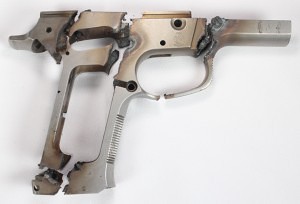
PoliceTrades.com also has a parts stripping and destruction program. Agencies can receive revenue through having old or confiscated firearms destroyed. Guns are stripped of valuable parts such as the slide, recoil springs, grips, and magazines while the serialized frame of the firearm is destroyed. The agency receives revenue from the parts as well as a certified letter detailing the serial numbers of the firearms and the date they were destroyed.
For more information on the brass trade-in program, the PoliceTrades.com programs, or any of Action Target’s products and services, call 801-705-9113.
